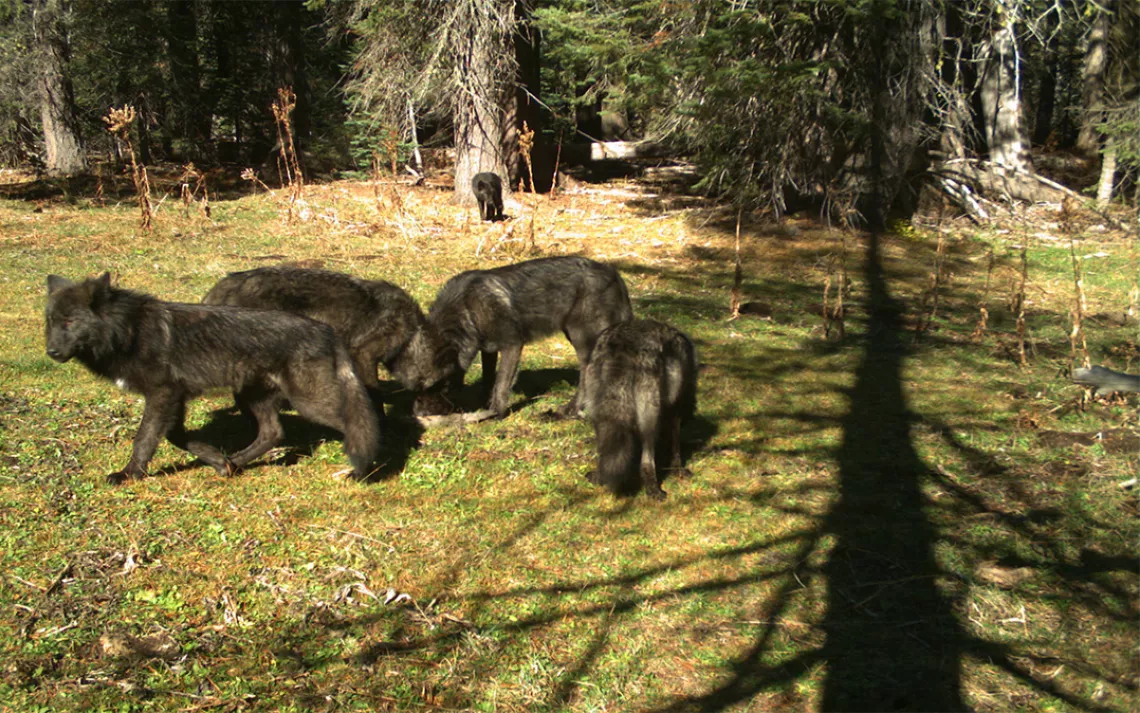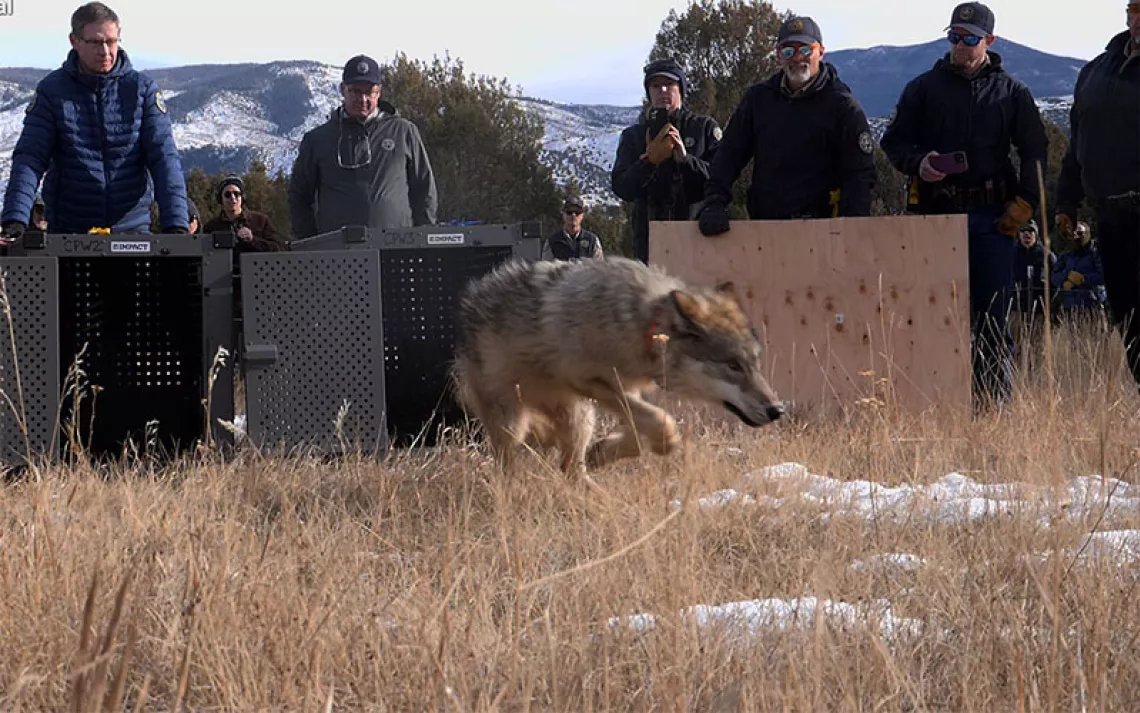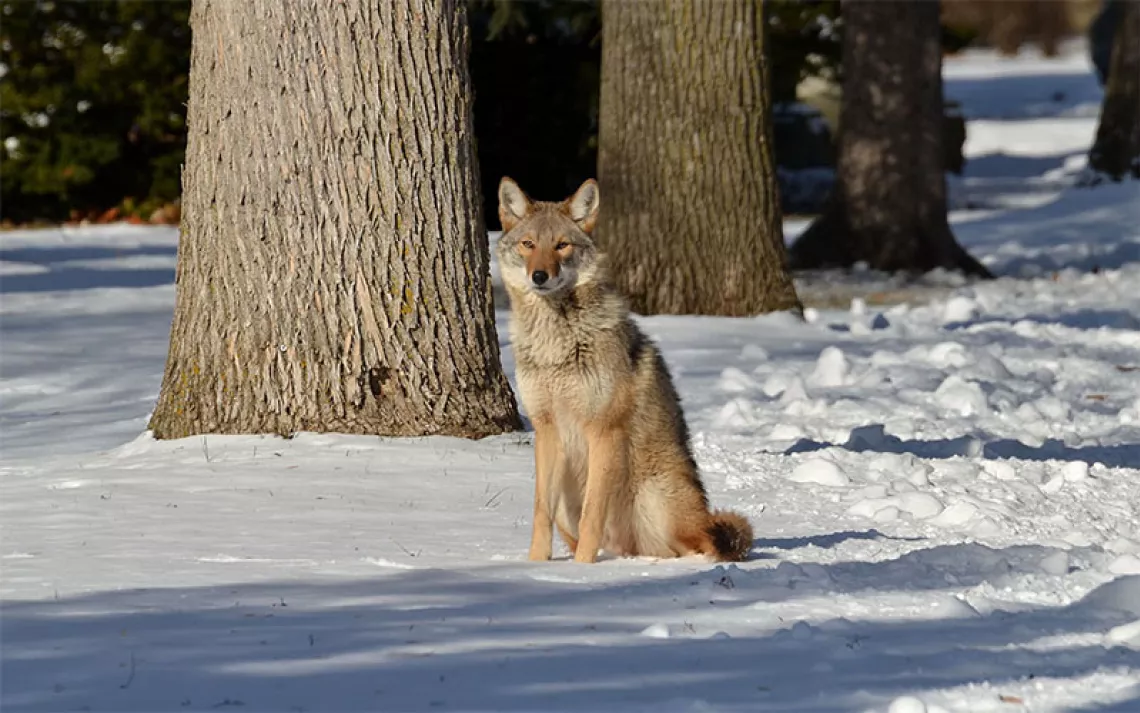California Wolves Threatened by “Baseless” Lawsuit
Not everyone is cheering the gray wolf's return to California

Shasta pack | Photo courtesy of California Department of Fish and Wildlife
On December 28, 2011, a wolf did what no other had done in nearly a century: It stepped on California soil.
The wolf was OR-7, a two-year-old male gray wolf with a GPS collar who had left his pack in northeastern Oregon and trekked hundreds of miles to Siskiyou County, California. Zigzagging through forests and mountain ranges, he became an internet sensation, the subject of a documentary and a children’s book, and—perhaps most consequentially—the catalyst for wolf-protection policy in California.
Conservation groups acted fast, proposing in February 2012 that wolves be listed as endangered under the California Endangered Species Act, or CESA. Later that year, the Department of Fish and Wildlife advised that listing might be warranted, and in 2014 made it official. The wolf was coming back, and the state would be bound to protect it.
Unless someone stepped in.
In January 2017, the California Cattlemen’s Association and the California Farm Bureau—lobbying groups for ranchers and farmers across the state—filed a lawsuit against the state’s Fish and Game Commission, alleging that it illegally placed the gray wolf on the state’s endangered-species list. The groups contend that listing the wolf prevents ranchers and farmers from protecting their livestock. “We’re not calling for open season on wolves,” says Kirk Wilbur, director of government affairs at the California Cattlemen’s Association. “What we’re really asking for is just for the Department [of Fish and Wildlife] to be given more tools to manage wolves.”
But conservation groups see it differently. Four of them—the Center for Biological Diversity, Environmental Protection Information Center, Klamath-Siskiyou Wildlands Center, and Cascadia Wildlands—have filed a motion to intervene in the suit in order to make the case for preserving wolves’ protected status.
The Pacific Legal Foundation, on behalf of the Cattlemen’s Association and the Farm Bureau, argues that three things disqualify the gray wolves making their way into northern California from endangered status: first, that the commission incorrectly considered the range of wolves only within the state of California when considering its designation; second, the listing was based on the “intermittent” presence of a single wolf, which they contend was not enough to say that there was an existing population within the state; and third, the subspecies from Oregon is not the same subspecies that inhabited the state a century ago. In order to qualify for CESA protection, it maintains, a subspecies must be native to the state.
“The lawsuit is completely baseless,” says Amaroq Weis, West Coast wolf organizer at the Center for Biological Diversity. “They make three arguments, and the record of the whole listing process completely contradicts each one.”
Regarding the wolves’ range, Weiss says the commission was correct to look only at the portion within California. “[CESA] does not direct the commission to look at what’s happening with the population of a species outside of the state,” she says. “It’s not just in this case—they interpreted the range of species as California range for all other species that they’ve listed. So they’re following their own precedent.”
Weiss also contends that OR-7’s presence in California was not “intermittent”—in fact, he stayed in the state for 15 straight months and then came back several more times in the same year he left. Even if he was in California intermittently, Weiss argues, that would not disqualify the wolf from listing. She cites the wolverine, the Guadalupe fur seal, and the California condor as all having had either zero or intermittent presence in the wild when they were listed as endangered.
What about the argument that the wolves are of the wrong subspecies? “It doesn’t matter,” says Greg Loarie of Earthjustice, which is representing the four conservation organizations. California’s Endangered Species Act, he says, “gives the Fish and Game Commission the authority to protect imperiled species—it doesn’t require the commission to break that down into subspecies.”
Loarie and Weiss ascribe ranchers’ backlash against wolf protection to a misguided fear of the animal. “I think that there’s a concern on the part of some folks that wolves represent untamed wildness, which is something to be feared,” says Loarie. “The reality, of course, is that wolves are an integral part of the western ecosystem.”
Without endangered-species protection, wolves could be “taken”—that is, killed or trapped. But killing wolves could have unintended consequences for ranchers and their livestock, according to recent scientific studies. “If you kill breeding animals,” says Weiss, “it can set up a scenario where young, sub-adult wolves are left behind with no older, mature wolves to teach them how to effectively hunt wild ungulates. And so they go for easier prey like cattle or sheep.”
The U.S. Department of Agriculture’s most recent report on cattle and calf deaths nationwide found that 94.5 percent of livestock deaths in 2010 were not related to predators. Of the remaining livestock deaths, only 3.7 percent were by wolves—coyotes, dogs, mountain lions, and vultures were far more frequent killers.
While Weiss and Loarie are confident in the case at hand, they’re quick to admit that wolves are still at risk. “The federal listing of wolves under the federal Endangered Species Act has been under attack basically since wolves were listed,” says Loarie. “Almost every year, we see a new attempt to roll back federal protection for wolves. Particularly, under this current administration, I think we can expect those attempted rollbacks to continue full force.”
 The Magazine of The Sierra Club
The Magazine of The Sierra Club







